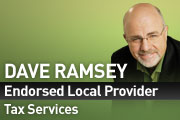CLIENT LETTER EXPLAINS RECENT DEVELOPMENTS THAT MAY AFFECT YOUR TAX SITUATION
Dear Clients:
The following is a summary of important tax developments that have occurred in the first three months of 2018 that may affect you, your family, your investments, and your livelihood. Please call us for more information about any of these developments and what steps you should implement to take advantage of favorable developments and to minimize the impact of those that are unfavorable.
Appropriations Act tax changes. On March 23, President Trump signed into law the Consolidated Appropriations Act 2018 (P.L. 115-141), a $1.3 trillion spending bill that funds the federal government through September. 30. In addition to funding the government, the bill also contains a number of tax provisions, including a fix to the so-called “grain glitch” which provided a disproportionate tax benefit to farmer who sold goods to co-operatives, a provision enhancing the low-income housing credit with a four year increase in the State housing credit ceiling, and a large number of technical corrections, including ones revamping the new partnership audit rules.
Bipartisan Budget Act includes 2017 impact. On February 9, President Trump signed into law the Bipartisan Budget Act of 2018 (P.L. 114-74). In addition to providing a continuing resolution to fund the federal government through March 23, the 2-year budget contained a number of tax law changes. In particular, the Budget Act retroactively extends through 2017 over 30 so-called “extender” provisions, included welcome tax relief to victims of the California wildfires and Hurricanes Harvey, Irma, and Maria, and provided a number of miscellaneous tax-related provisions.
Short-term funding bill delays some Obamacare taxes. On January 22, President Trump signed into law the Federal Register Printing Savings Act of 2017 (P.L. 115-120), which ended the government shutdown and funded the government through February 8th. It also suspended several Affordable Care Act (ACA, or Obamacare) taxes. The 40% under Code Sec. 4980I excise tax on high cost employer-sponsored health coverage (the so-called “Cadillac tax”) was delayed to apply for tax years beginning after Dec. 31, 2021; the 2.3 % Code Sec. 4191 medical device under was delayed retroactive to the beginning of 2018 to apply to sales after Dec. 31, 2019; and the annual fee on health insurance providers was suspended for 2019 (however, it remains in effect for 2018).
The IRS will not accept “silent” 2017 returns. The IRS said it will not accept electronically filed 2017 tax year returns that don’t report whether the taxpayer has complied with the individual mandate provisions of the ACA. Under the ACA shared responsibility or individual mandate provision, individuals are required to obtain qualifying minimum essential coverage (MEC), receive an exemption from the coverage requirement (e.g., on account of having household income below the return filing threshold), or pay a penalty. Tax returns that didn’t report full-year MEC or an exemption, or pay an penalty, are referred to as “silent returns”. While the Tax Cuts and Jobs Act (TCJA, P.L. 115-97, 12/22/2017) provides that for months beginning after Dec. 31, 2018, the amount of the individual shared responsibility payment is reduced to zero, the IRS will not treat as complete and accurate 2017 returns that are silent on compliance with ACA individual mandate.
Battery qualified for residential energy credit. In a private letter ruling (PLR 201809003), the IRS held that a battery that was integrated into an existing solar energy system was a qualified solar electric property expenditure eligible for the Code Sec. 25D tax credit under which an individual may claim a 30% credit for qualified solar electric property expenditures made by him during the year. Thus, it appears that taxpayers can not only save on their electrical bills and tax bills by installing a solar energy system but will also obtain an additional tax credit and shield themselves from grid outages from storms, etc., by installing a battery and storing the energy generated by their solar equipment. But, note that the battery cost will qualify for the credit only if the battery only stores solar-generated energy.
Roth IRA conversion recharacterization. In Frequently Asked Questions posted to its website, the IRS clarified the effective date of a provision in the TCJA prohibiting a taxpayer from recharacterizing a Roth conversion. The TCJA amended Code Sec. 408A(d)(6)(B)(iii) such that the provision allowing taxpayers to recharacterize Roth IRA contributions and traditional IRA contributions does not apply to a conversion contribution to a Roth IRA. The TJCA also prohibits recharacterizing amounts rolled over to a Roth IRA from other retirement plans, such as Code Sec. 401(k) or Code Sec. 403(b) plans. The change in law is effective for tax years beginning after Dec. 31, 2017. There was some confusion among tax professionals regarding the effective date of the change. Specifically, there was some debate as to whether the pre-2018 effective date referred to the tax year when the recharacterization was made, or the tax year when the unwinding of that recharacterization occurs. The FAQs provide that if a traditional IRA was converted to a Roth IRA in 2017, it may be recharacterized as a contribution to a traditional IRA until Oct. 15, 2018.
Offshore voluntary disclosure program ending. In IR 2018-52, 3/13/2018, the IRS announced that it will be closing the offshore voluntary disclosure program (OVDP) on September 28, 2018. The OVDP is a tax amnesty program that permits U.S. taxpayers with unreported foreign accounts to avoid criminal charges and pay reduced civil penalties by making a voluntary disclosure to the IRS. The IRS noted that, by alerting taxpayers to the closure now, it intends to provide U.S. taxpayers with undisclosed foreign financial assets time to avail themselves of the OVDP before the program closes.
Withholding tables reflect recently enacted tax reform. The IRS released Notice 1036, Early Release Copies of the 2018 Percentage Method Tables for Income Tax Withholding, which updated the income tax withholding tables for 2018 to reflect changes made by the TCJA, including major changes to the income tax rates, an increased standard deduction, and the elimination of personal exemptions, effective for tax years beginning after Dec. 31, 2017. The IRS also provided information that explained the use of the new tables and related subjects. The 2018 federal withholding tables, which were issued later than usual due to TCJA’s enactment, must be used beginning on Feb. 15, 2018. That is also the deadline for changing the optional flat rate for withholding on supplemental wage payments of $1 million or less (bonuses, commissions, etc.) from 25% to 22%.
Withholding calculator. The IRS also released an updated withholding calculator on its website, as well as a new version of Form W-4, to help taxpayers check their 2018 withholding in light of changes made by the TCJA. IRS also issued a series of frequently asked questions on the withholding calculator. While the updated withholding tables are designed to work with existing Forms W-4 that employers have on file, many taxpayers (such as those with children or multiple jobs, and those who itemized deductions under prior law) are affected by the new law in ways that can’t be accounted for in the new withholding tables. The IRS encourages employees to use the withholding calculator and new form to perform a quick “paycheck checkup” to help protect against having too little tax withheld and facing an unexpected tax bill or penalty at tax time in 2019. It can also prevent employees from having too much tax withheld.
Withholding on certain publicly traded partnership interests suspended. In Notice 2018-8, 2018-4 IRB, the IRS has announced that, pending further guidance, it was suspending withholding obligations under Code Sec. 1446(f) with respect to certain publicly traded partnership (PTP) interests. Code Sec. 1446(f), which was recently added by the TCJA, provides that if any portion of the gain on any disposition of an interest in a partnership would be treated under Code Sec. 864(c)(8) as effectively connected with the conduct of a trade or business within the U.S. (i.e., “effectively connected gain”), then the transferee must withhold a tax equal to 10% of the amount realized on the disposition. The suspension doesn’t extend to new Code Sec. 864(c)(8), as added by TCJA, which provides the extent to which a nonresident alien individual’s or foreign corporation’s gain or loss from the sale, exchange, or other disposition of a partnership interest is effectively connected with the conduct of a U.S. trade or business.
Respectfully yours,
Mike Habib, EA
Do not compromise on your tax service provider, call us for a free and confidential 15 minute consultation at 877-788-2937.
About Mike Habib, EA NTPI Fellow®:

Mike Habib is an IRS licensed Enrolled Agent who owns and operates a specialized tax services boutique firm serving clients in various metro areas such as Los Angeles, Whittier, Pasadena, Glendale, Burbank, Orange County, Riverside, Palm Springs, San Bernardino, Palmdale, Bakersfield, New York, New Jersey, Chicago, Houston, Phoenix, Philadelphia, San Antonio, San Diego, Dallas, San Jose, Detroit, Jacksonville, Indianapolis, San Francisco, Columbus, Austin, Memphis, Fort Worth, Baltimore, Charlotte, El Paso, Boston, Seattle, Washington DC, Milwaukee, Denver, Louisville, Jefferson, Las Vegas, Reno, Hempstead, Tucson, Nashville, Davidson, Portland, Tucson, Albuquerque, Santa Fe, Anchorage, Atlanta, Long Beach, Fresno, Sacramento, Mesa, Kansas City, Cleveland, Virginia Beach, Omaha, Miami, Oakland, Tulsa, Honolulu, Minneapolis, Pittsburgh, Colorado Springs, Arlington, Wichita, Birmingham, Montgomery, Tampa, Orlando.
About Former Dave Ramsey ELP 2012-2019:

Former Dave Ramsey ELP 2012-2019, a well known public figure, is known for his personal money-management expertise and is an extremely popular national radio personality. His four New York Times best-selling books – Financial Peace, More Than Enough, The Total Money Makeover, and EntreLeadership – have sold millions of copies combined.
Former Dave Ramsey ELP 2012-2019 also offers his life-changing message as the host of a nationally syndicated radio program, The Former Dave Ramsey ELP 2012-2019 Show, which is heard by more than 5 million listeners each week on about 500 radio stations throughout the United States.
Former Dave Ramsey ELP 2012-2019 is also known as the creator of the Financial Peace University (FPU), a program that helps people get rid of their debt, take control of their finances, and learn new money behaviors that are founded on commitment and accountability. More than one million families have attended FPU classes at various venues, workplace, church, military base, local nonprofit organization, community group or Spanish-speaking organization.
The popular “Dave Says” syndicated column is also available to more than 17 million readers every month. Also, thousands of children have enjoyed his entertaining and educational book series.
 Tax Relief Blog
Tax Relief Blog







